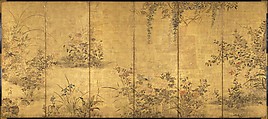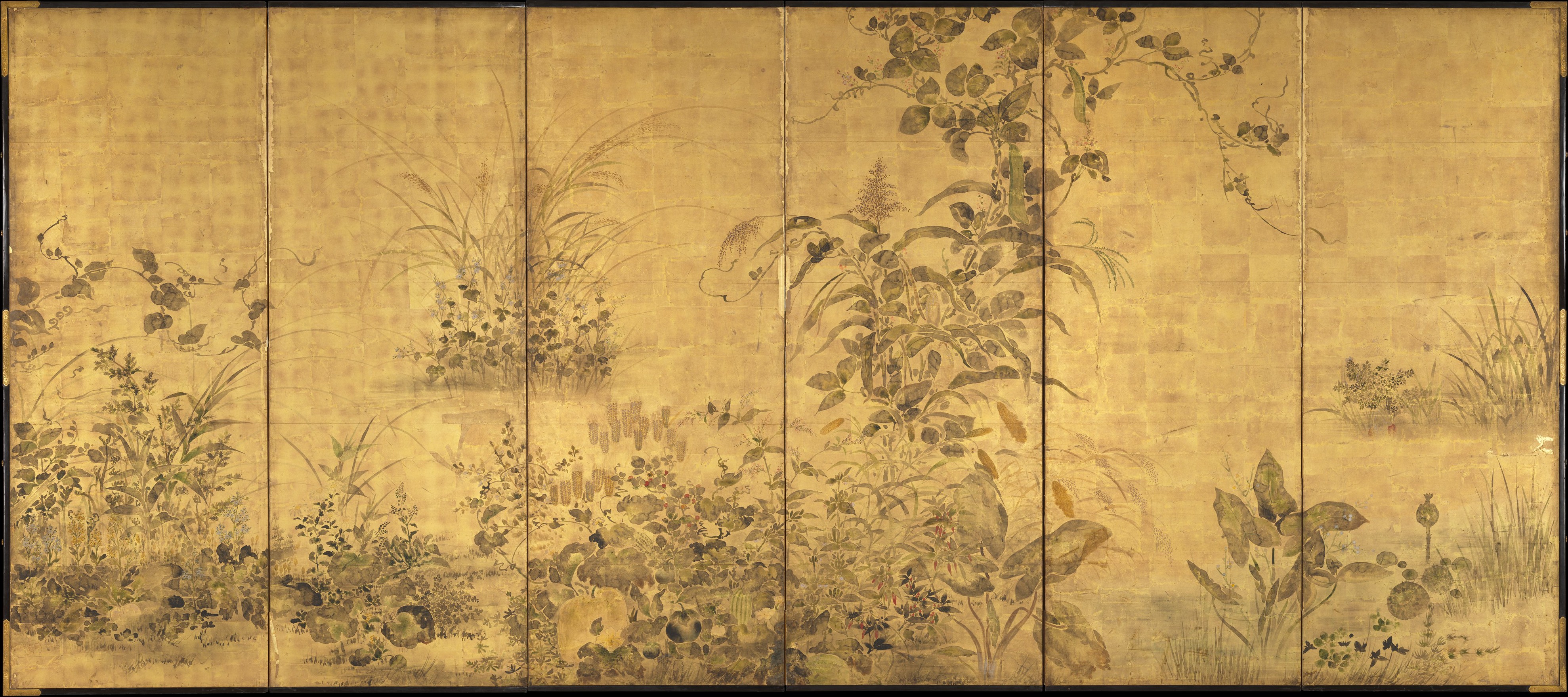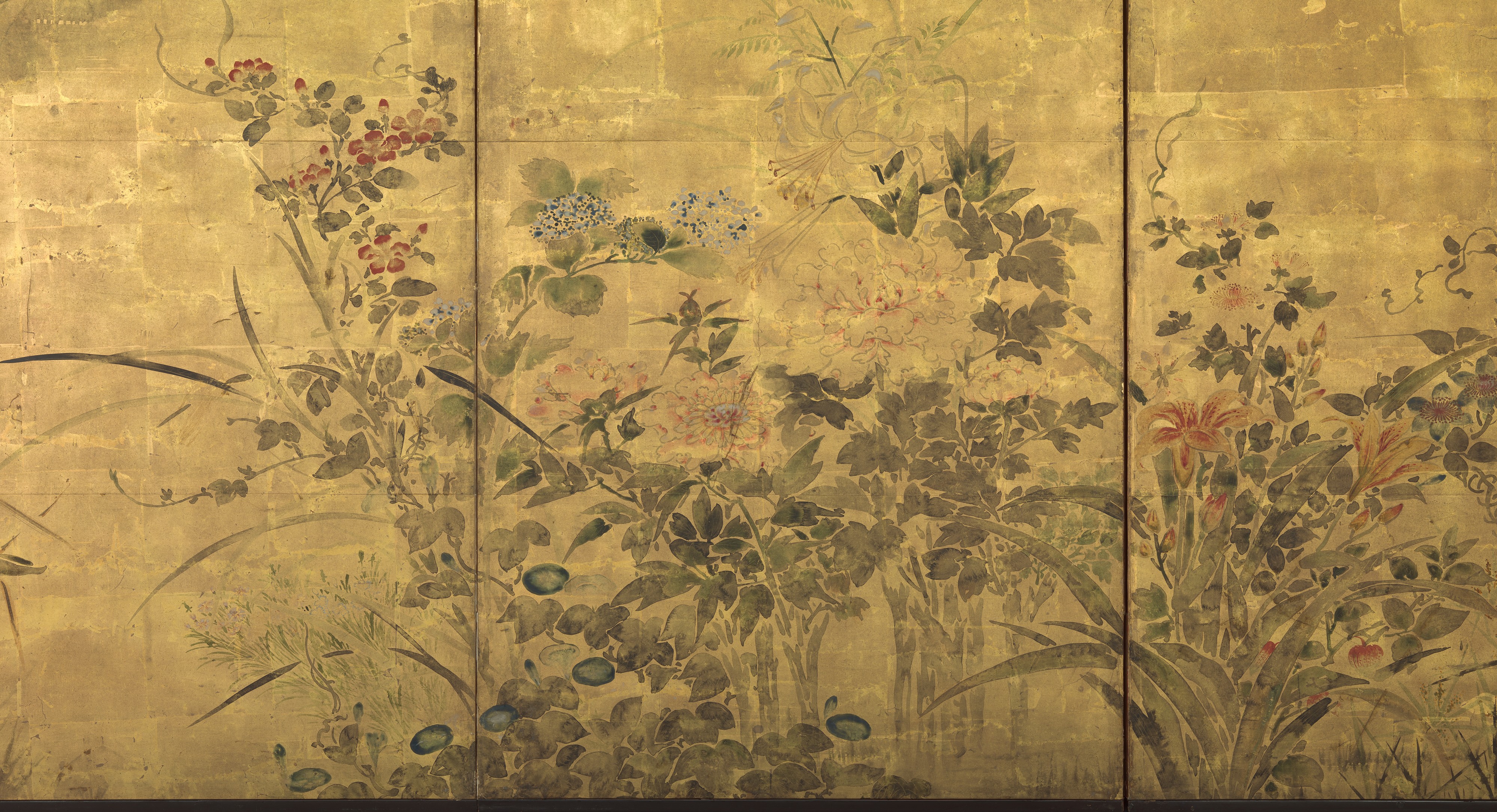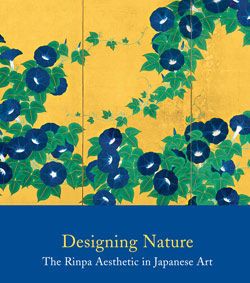Flowering Plants and Vegetables of the Four Seasons
Not on view
These screens feature a profusion of flowering plants and vegetables painted with “boneless” brushwork (without outlines) in mineral colors and ink on a gold-leaf ground. They were created by an eighteenth-century follower of the Rinpa style established by Tawaraya Sōtatsu (ca. 1570–ca. 1640).
Flowers and flowering grasses of the four seasons, including cotton roses, dandelions, irises, violets, and wild wisteria, are depicted on the right screen; vegetables—such as carrots, corn, eggplants, millet, peas, radishes, and turnips—predominate on the left. Thirty-four flowering plants and thirty-two vegetables have been identified. The broad-leafed vegetation on the left creates a bold visual contrast to the delicate flora on the companion screen. During the eighteenth century, Chinese pharmacology and Western botany drew the attention of Japanese intellectuals not only to plants linked to classical literary traditions but also to domestic flowers and vegetables in their natural environs.
This image cannot be enlarged, viewed at full screen, or downloaded.
This artwork is meant to be viewed from right to left. Scroll left to view more.






